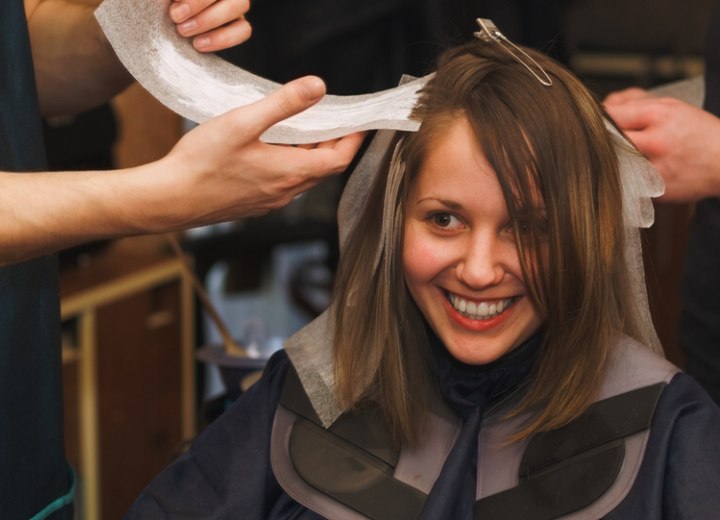Ombré and Cutting Hair

A: Yes, it’s always better to cut the unwanted hair off before you proceed with any chemical process. In fact, in almost all cases we first do the cut and then do the coloring. It’s always advisable to further texturize or trim the hair after it has been colored, especially in the case of highlights, flash-lights or when you’re doing a creative style.
Here’s why we always first to the basic cut and then proceed with the color:
1 .When you apply bleach to the hair to do an ombré, highlights, flash-lights, etc. you damage the structure of the hair to an extent. The tips of the hair tend to split or break during this process, thus it is better to cut the damaged ends off before it splits the hair further.
2. If you apply the color or chemicals before completing the basic cut then you’re wasting a huge amount of product on the hair that you’re going to cut off in any case. This means either the salon loses unnecessary product, which inadvertently means its profit decreases, or you have to charge the client more than necessary, which means that she’ll probably go to a more reasonable priced salon in the future.
3. Especially in the case of an ombré, the final length of the hair plays a huge role in the appearance of the ombré. If you do the ombré first on a client with very long hair, you will have to apply a fade-in technique from the darker roots towards the light tips over the space of long tresses. If you cut off the ends after you’ve completed the coloring, you’ll be left with an overall darker result because you’d have cut off most of the blonde/light ends. The client will undoubtedly be unhappy, because the fade-in of the ombré won’t be balanced.
4. In the case of creative hairstyles; the hair color must be customized according to the cut. This means that you must always first do the cut and then the color. Have a look at most L’Oréal and Schwarzkopf hair cutting and coloring techniques. They almost always first do the cut and then the color of the hair. After the color has been completed, they’ll again use a razor or thinning shears to individualize the style so that the cut and color come together, fused like a piece of art. Finally, they’ll do the styling.
5. In other chemical services the length is paramount, for example perming. The structure of the curl immensely varies according to length. Curls of long hair are more relaxed because of the weight of the hair. Thus, we usually first cut and then perm the hair, and trim the ends afterward.
©Hairfinder.com
See also:
How to color hair
Will ombré damage my hair?
How can I achieve the ombré hair color that a lot of celebrities and models have?